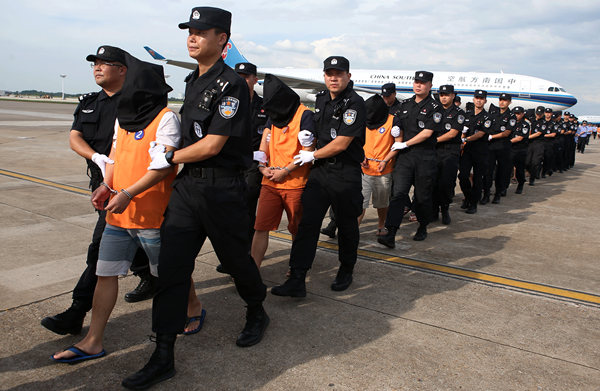Atrocities of Japanese Unit 731 revealed in documents
Atrocities committed by Japanese Army Unit 731, a germ warfare unit once stationed in northeast China’s Heilongjiang Province, have been further exposed in newly found historical documents.
The 24 documents collected in Japan were written by members of Unit 731, according to Yang Yanjun, associate researcher at the Unit 731 Research Center of Harbin Academy of Social Sciences.
Unit 731 was established in Harbin in 1935, during the Japanese army’s occupation of northeast China.
Soldiers in the unit took photographs and wrote papers on the region’s wetlands, geology, mountains, and water resources to prepare for germ warfare and provide references for Japanese immigrants.
Other documents include materials collected by the unit on epidemic prevention, geology, transport and laws of the Soviet Union. The documents were produced between March 1937 and November 1939, Yang said.
According to Jin Chengmin, curator of the Museum of Evidence of War Crimes by Japanese Army Unit 731, human experiments, production, experiments and use of germ weapons were the core of Unit 731 activity.
In 1941, a Chinese man named Li Pengge was detained after refusing to help Japanese Intelligence detect Soviet signals, Jin said. Li was sent to Unit 731 and met a gruesome death on an operating table aged 25.
Jin said more than 3,000 people died at Unit 731. The unit conducted experiments on at least 93 Soviet people during World War II. Among them were prisoners of war and civilians, including women and children.
The Japanese government continues to deny the crimes despite the evidence. No one involved with Unit 731 has ever been tried for war crimes.
Ordinary Japanese people feel sorry to war victims after knowing the truth. On this year’s Tomb Sweeping Day, a Japanese delegation including three war orphans visited the exhibition in Harbin.
After the war, many fleeing Japanese left their children behind, who were then cared for by Chinese families. These children, many now at least in their seventies, are called war orphans.
According to the museum, Unit 731 produced around 300 kilograms of plague bacillus, 600 kg of anthrax bacteria, 800 to 900 kg of typhoid bacteria, and thousands of kilograms of other deadly pathogens each month.
Between 1937 and 1942, the unit manufactured more than 2,000 germ bombs, loaded with fleas infected with plague bacillus.
“If war had not ended in 1945 and Japan had begun large-scale germ warfare, that could lead to the disappearance of humans, given the production capacity of Unit 731,” said Yang.


